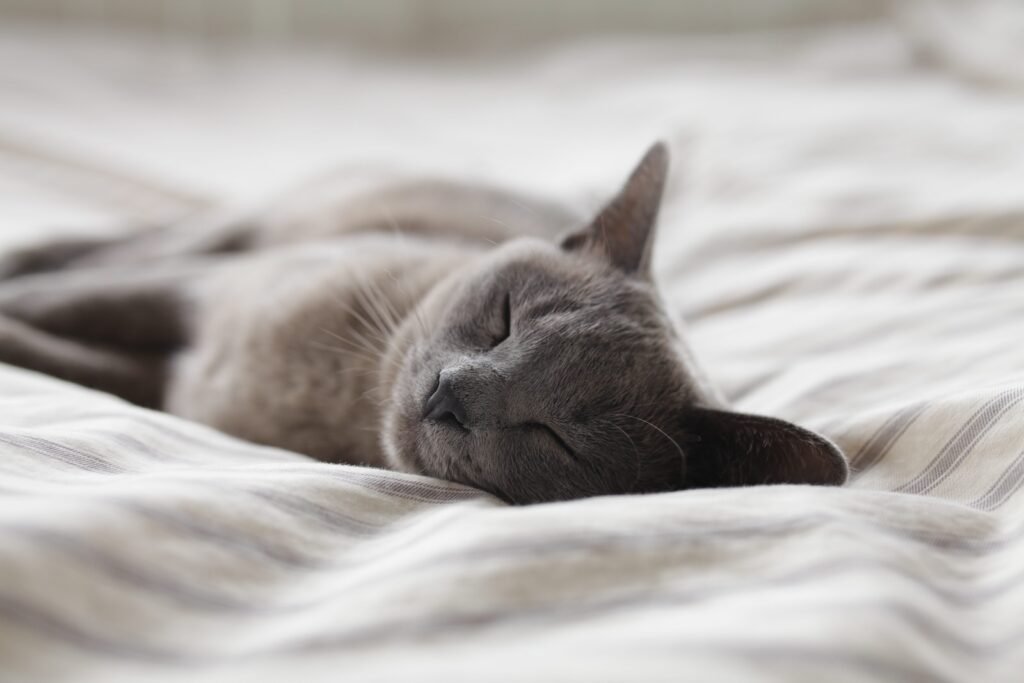Understanding the signs and treatment of common urinary tract problems in cats.
As a loving cat owner, there’s nothing more important than ensuring your furry companion is healthy and happy. Unfortunately, urinary tract problems can be all too common in cats, causing discomfort and even serious health complications if left untreated.
From persistent urination to blood in the urine, it’s crucial for every cat parent to know how to spot the signs of a urinary tract condition and seek proper treatment promptly. In this blog post, we’ll explore the most common causes of feline UTIs, discuss symptoms to watch out for, and offer helpful tips on how to keep your kitty feeling their best!
The Urinary System in Cats

The urinary system in cats is quite similar to that of dogs and humans, with the main exception being that the male cat does not have a prostate. The urinary tract includes the bladder, urethra, and kidney.
The bladder is located just below the stomach and holds about two cups of urine. When it is full, the cat will void through the urethra. The kidneys are responsible for filtering the blood to remove all of the waste products from the blood.
Types of Urinary Tract Problems in Cats
There are a variety of urinary tract problems that can be seen in cats.
These can include
- Incontinence: Cats may wet the floor frequently or not at all.
- Urinary tract infections (UTIs): Cats may have a burning sensation when they go to the bathroom, and blood in their urine.
- Bladder stones: These small minerals can form in the bladder and cause obstruction.
- Urethral syndrome: This is a condition in which the urethra becomes narrowed or blocked, often leading to a lack of urine flow.
Symptoms of Urinary Tract Problems in Cats
If you have a cat and she is suddenly having trouble going to the bathroom, her first step should be to visit her veterinarian. Many kittens and cats begin their urinary tract problems between 6 and 12 months of age. In fact, it’s not uncommon for a cat to start having urinary tract problems before she even has a litter of kittens!
One common problem is struvite crystals in the urine, which can form when there are too many bacteria in the urinary tract. This problem is often caused by a change in diet or lack of clean water. If left untreated, struvite crystals can cause bladder stones and other serious medical problems.
Other symptoms that may warrant veterinary attention include:
- Recurring infections in the bladder or upstream from the bladder (in the urethra)
- Blood in the urine or Kitty at risk for kidney failure if this problem isn’t treated immediately
If your cat exhibits any one of these symptoms, it’s important to bring her into see her veterinarian as soon as possible. Your veterinarian can perform a variety of tests to determine the root cause of the issue and provide appropriate treatment.
Diagnosis of Urinary Tract Problems in Cats

Urinary tract problems are common in cats and can often be diagnosed by ruling out other possible causes.
Here are some of the most common urinary tract problems in cats:
1] Urinary Tract Infection (UTI) – When a cat has a UTI, their urine will smell bad and there may be blood in the urine. If left untreated, a UTI can lead to kidney infection and ultimately death. Self-care measures you can take to prevent a UTI in your cat include frequent litter changes, correcting any Sandman issues that could encourage bacteria growth (e.g., opening windows for ventilation), and giving your cat antibiotics as prescribed by their veterinarian.
2] Cystitis – Cystitis is an inflammation of the bladder wall resulting in cloudy urine, pain when urinating, fever, and often recurring infections. Treatment typically involves antibiotics and pain relief medications such as ibuprofen administered orally or via injection directly into the bladder. Some cats also require surgery to remove part or all of the bladder if treatment fails or if the cat suffers from serious health complications related to cystitis.
3] Urethral Blockage – A urethral blockage is when something blocks the passage of urine from the penis to outside the body, most commonly due to crystals forming in the urinary tract (this is also known as struvite stone formation). If not treated immediately, a urethral blockage can lead to swelling and pressure on the bladder, neurological problems (e.g., seizures), and eventually death.
4] Bladder Cancer – Although bladder cancer is relatively rare in cats, it is the most common form of Urothelial Cancer in cats, accounting for about 50% of all cases. Bladder cancer can often be diagnosed by detecting abnormal changes in a cat’s urine or by conducting a prostate exams done to rule out other possible causes of urinary obstruction. If bladder cancer is suspected, your cat will likely require surgery to remove the tumor.
Treatment of Urinary Tract Problems in Cats
Urinary tract problems in cats can be due to a variety of reasons, including neoplasia (cancer), stones, andinfection. In most cases, however, the underlying cause is unknown and a diagnosis must be made by a veterinarian.
Many urinary tract problems in cats can be treated on an outpatient basis with medicines and/or surgery. If the problem is caused by cancer or another illness, then treatments may include chemotherapy or other treatments necessary to cure the condition.
In some cases, however, it is difficult to determine whether a urinary tract problem is simply due to bladder stress (due to medical issues such as diabetes or kidney disease) or if there is an underlying cause. In these cases, a cat may need diagnostic tests such as x-rays or a urinalysis (a blood test that looks for signs of infection or diseases of the urinary tract). If necessary, treatment may include medications and/or surgery.
Causes of urinary tract problems in cats
Urinary tract problems in cats can be caused by a variety of factors, including diet, genetics, and age. Some of the most common urinary tract problems in cats include wetting the bed, frequent odors, difficulty getting up after sitting or standing, and straining to urinate.
If you notice any of the following signs in your cat, be sure to take them to the vet for a check-up: increased number of trips to the litter box, irritating urine odor, blood in the urine, painful urination, lack of appetite because of pain when trying to drink or eat. If your cat is having recurrent infections (more than two episodes in six months), there is a good chance that they have an underlying medical condition that is causing their urinary problems.
Signs and Symptoms of urinary tract problems in cats
Urinary tract problems in cats can be caused by a variety of things, but the most common are UTI (urinary tract infection) and struvite stone formation.
UTI symptoms in cats may include excess dribbling, frequency, insufficient urine production, bloody urine,pain when peeing and fever. If left untreated, UTI can progress to serious health problems such as sepsis (blood poisoning).
Struvite stone formation is a common problem in older cats with narrowing of the urinary tract due to age or other health conditions. As stones form, they can cause blockage of the flow of urine, which can lead to signs such as progressive kidney failure or even death. Treatment for struvite stone formation depends on the cause.
If you notice any signs of urinary tract Problems in your cat, it is important to consult with a veterinarian as soon as possible. There are many different treatments options available for urinary tract problems in cats and early diagnosis and treatment is always best for their health.
Treatment of urinary tract problems in cats
One of the most common problems faced by cat owners is their cats urinating outside the litter box. Whether it’s a single incident or a continual problem, urinary tract issues can be frustrating and stressful for both you and your pet.
Urinary tract problems can be caused by many different factors, but they usually stem from a combination of incomplete bladder emptying and blockages in the urinary tract. Fortunately, diagnosis and treatment of urinary tract problems in cats is generally straightforward and relatively simple.
The most common signs that your cat is experiencing a urinary tract problem are frequent trips to the bathroom (particularly at night), puddles of urine around the house, straining to urinate, blood in the urine, pain when urinating, and sudden weight loss.
If you notice any of these signs in your cat, make an appointment with your veterinarian as soon as possible. آ The vet will perform a medical evaluation to determine the root cause of the problem وآ he or she will also prescribe appropriate treatment based on the results of that evaluation.
Conclusion
Urinary tract problems are the number one cause of veterinarian visits in cats. By understanding what causes these problems, you can create a urinary environment that is friendly for both your cat and your wallet.
In this article, we have outlined six common urinary tract problems in cats, provided tips on how to identify them, and offered treatments that work best for each situation. Armed with knowledge about urine troubles in kitties, you will be able to help keep your furry friend healthy and happy .






